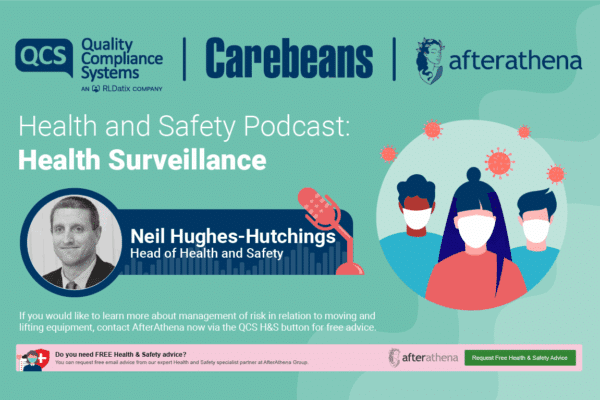Employers have a duty of care to their healthcare workers and service users and this duty includes the control of Legionnaires’ disease.
What is Legionnaires’ disease?
Legionnaires’ disease is normally contracted by inhaling small droplets of water (aerosols), suspended in the air, containing the bacteria. Certain conditions increase the risk from legionella when:
- the water temperature in all or some parts of the system may be between 20–45 °C, which is suitable for growth;
- it is possible for water droplets to be produced and if so, they can be dispersed;
- water is stored and/or re-circulated;
- there are deposits that can support bacterial growth, such as rust, sludge, scale, organic matter and biofilms.
Legislation applicable to the control of legionella
- Health and Safety at Work etc Act 1974
- Control of Substances Hazardous to Health Regulations 2002
- The Management of Health and Safety at Work (Amendment) Regulations 2006
- The Reporting of Injuries, Diseases and Dangerous Occurrences Regulations 2013
- The Safety Representatives and Safety Committees Regulations 1977
- Health and Safety (Consultation with Employees) Regulations 19966
The Approved Code of Practice (ACOP) Legionnaires’ disease: the control of legionella bacteria in water systems gives guidance to duty holders, which includes employers and those with responsibilities for the control of premises, e.g. landlords. The fourth edition of the ACOP gives guidance on regulations. The technical guidance is published separately as HSG274 in three parts: Part 1: Evaporative cooling systems; Part 2: Hot and cold water systems and Part 3: Other risk systems.
Legal duties of duty holder
To comply with legal duties, duty holders should:
- identify and assess sources of risk. This includes checking whether conditions will encourage bacteria to multiply. For example, if the water temperature is between 20–45 °C, if there is a means of creating and disseminating breathable droplets, such as the aerosol created, e.g. by cooling towers, showers and spa pools; and if there are ‘at risk’ susceptible people who may be exposed to the contaminated aerosols
- if appropriate, prepare a written scheme for preventing or controlling the risk
- implement, manage and monitor precautions – if control measures are to remain effective, regular monitoring of the systems and control measures is essential. Monitoring general bacterial numbers can indicate whether you are achieving microbiological control and sampling for legionella is another means of checking that a system is under control;
- keep records of the precautions
- appoint a competent person with sufficient authority and knowledge of the installation to help take the measures needed to comply with the law
Most businesses will appoint an external company to carry out a Legionnaires’ risk assessment and be the named competent person ensuring the above points are covered.
Risk assessments
There are several risk factors that that the duty holder must assess and review. Section 41 of the ACOP states:
There are a number of factors that create a risk of someone acquiring legionellosis, such as:
- the presence of legionella bacteria;
- conditions suitable for growth of the organisms, eg suitable water temperature (20°C–45°C) and deposits that are a source of nutrients for the organism, such as sludge, scale, rust, algae, other organic matter and biofilms;
- a means of creating and spreading breathable droplets, eg the aerosol generated by cooling towers, showers or spa pools;
- the presence (and numbers) of people who may be exposed, especially in premises where occupants are particularly vulnerable, eg healthcare, residential and nursing homes.
Risk assessment
The duty holder must ensure that a risk assessment is undertaken. The risk assessment can be done by an external specialist. The duty holder is the person who is either the employer, self employer or the person in control of the premises. Section 28 of the ACOP states that a suitable and sufficient assessment must be carried out to identify and assess the risk of exposure to legionella bacteria from work activities and water systems on the premises and any precautionary measures needed.
Review of the risk assessment
According to section 47 of the ACOP the risk assessment must be reviewed when key changes occur. These changes include:
- changes to the water system or its use;
- changes to the use of the building in which the water system is installed;
- availability of new information about risks or control measures;
- the results of checks indicating that control measures are no longer effective;
- changes to key personnel;
- a case of legionnaires’ disease/legionellosis associated with the system.
Competent person
A competent person should be appointed if there is a reasonable foreseeable risk and if it is reasonably practicable to prevent exposure or control the risk from exposure.The competent person should know the:
- potential sources of legionella bacteria and the risks they present;
- measures to adopt, including the precautions to take to protect the people concerned, and their significance;
- measures to take to ensure that the control measures remain effective, and their significance.
Preventing or controlling the risk
The duty holder must ensure that the risk from exposure should be controlled. Some of these control measures listed in the ACOP are:
- avoiding water temperatures between 20 °C and 45 °C and conditions that favour the growth of legionella bacteria and other microorganisms;
- avoiding water stagnation which may encourage the growth of biofilm;
- avoiding the use of materials that harbour bacteria and other microorganisms, or provide nutrients for microbial growth.
- controlling the release of water spray;
- maintaining the cleanliness of the system and water in it;
- using water treatment techniques;
- taking action to ensure the correct and safe operation and maintenance of the water system
Monitoring and routine inspection
The duty holder should ensure routine inspection of the water system such as testing of the water quality.
Records of monitoring
Records should include details about:
- the appointed responsible person(s) for conducting the risk assessment, managing, and implementing the written scheme;
- any significant findings of the risk assessment;
- the written scheme and its implementation;
- details about the state of operation of the water system, i.e. in use/not in use;
- the results of any monitoring inspection, test or check carried out, and the dates.
These records should be retained throughout the period they are current and for at least two years afterwards.
QCS
QCS provides comprehensive guidance to meet your organisational needs. Contact QCS for further information on policies and procedures that you can implement within the workforce.
References
Health and Safety at Work etc Act 1974
Control of Substances Hazardous to Health Regulations 2002
The Management of Health and Safety at Work (Amendment) Regulations 2006
The Reporting of Injuries, Diseases and Dangerous Occurrences Regulations 2013
The Safety Representatives and Safety Committees Regulations 1977
Health and Safety (Consultation with Employees) Regulations 1966






